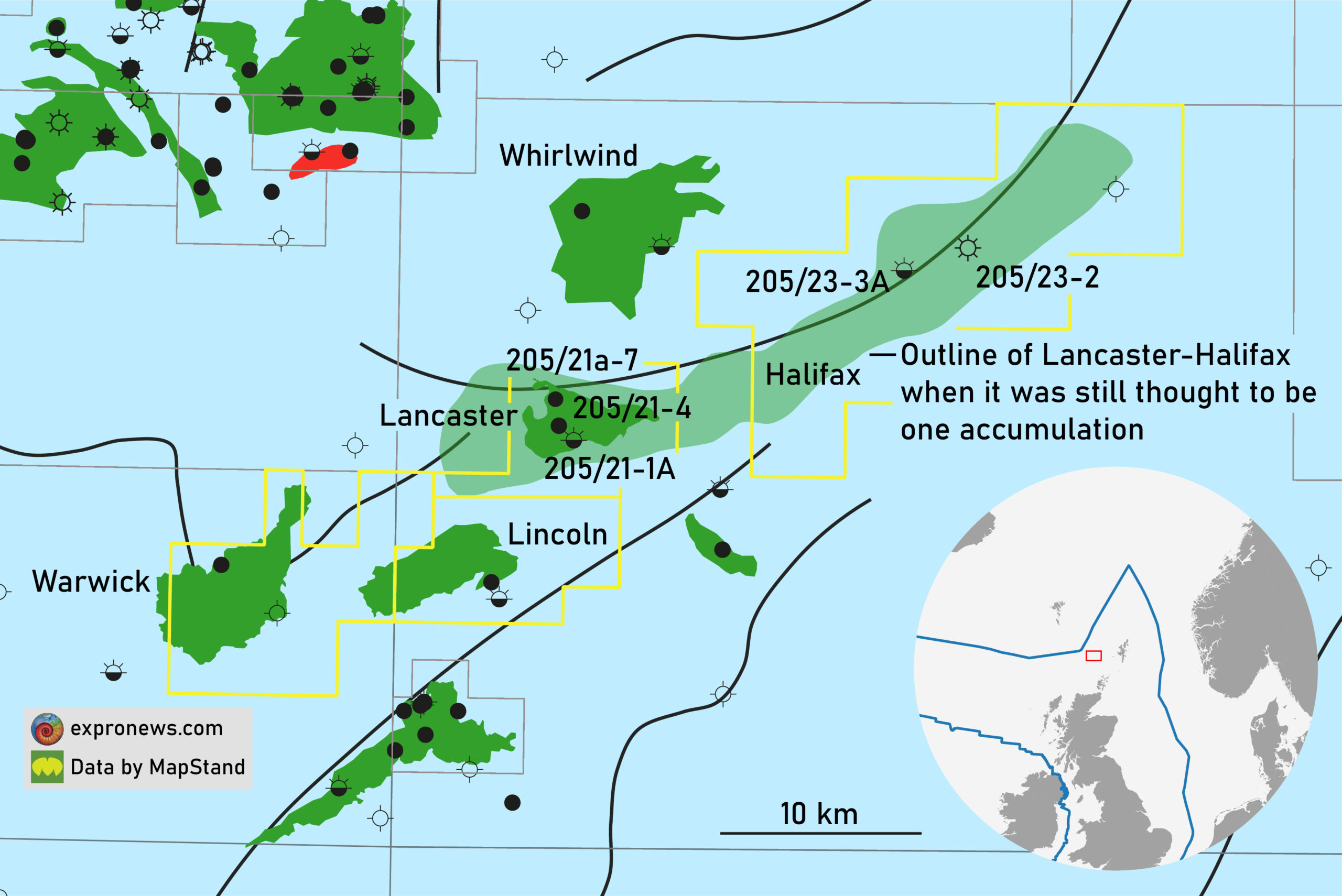In 2017, the Scottish Energy News wrote the following, based on an interview with Hurricane: “We believe that the Greater Lancaster Area (including the recently drilled Halifax discovery, red.) is a single hydrocarbon accumulation – making it the largest undeveloped discovery on the UK Continental Shelf.”
Independently assessed through a competent persons’ report, the credibility of this claim was high, leading many people to believe that the combined Lancaster-Halifax discoveries did in fact represent one accumulation that shared one oil water contact.
Another quote from the same news article cited from above:
“The fact that oil was encountered at a greater depth than seen at Lancaster, coupled with the analogous reservoir quality would strongly suggest that Lancaster-Halifax is one large accumulation – potentially making this the largest undeveloped discovery on the UKCS.”
All in all, hopes were high of a discovery that exceeded the 1 billion barrel size.

Now, a few years later in April 2021, another independent assessment of the Halifax discovery concludes that well 205/23-3A in fact did not find any hydrocarbon resources. The basement oil samples found were a mixture of biodegraded and residual oil. Therefore, it is no surprise that the drill stem test did not flow oil to surface.
This is not only bad news for Hurricane and its investors, but also for the oil and gas industry as a whole. How is it possible that an independent assessment carried out in 2017 is able to produce in place volumes for Halifax amounting to 5,143 MMstb (best estimate), up to 9,043 MMstb as a High case, when only a few years later, without any more wells having been drilled on the discovery, its volumes essentially disappear from the radar?

How it started
Fractured basement oil on the Rona Ridge was first proven in the Lancaster area when Shell drilled 205/21-1A to test a Jurassic sandstone interval. From 2009 to 2016, Hurricane drilled five more wells on the Lancaster structure.
In 2016, appraisal well 205/21a-7 was drilled to find the Lancaster OWC. An oil pressure gradient was established but no water pressures were obtained. Based on resistivity logs, GC Tracer analysis and cuttings and with a water gradient projected from the seabed, the Lancaster OWC was estimated to be between 1597m – 1678m.
The field started production through two development wells tied back to an FPSO in May 2019. Until December 2020 it produced 8.11 MMstb.
It was in September 2020 that the company issued a press release stating that early water break through and rapid pressure decline had forced them to shift the OWC upwards to a depth of 1,330 m TVDSS.
For reference, the top Basement in 205/21-1A lies at ~1328 m and in 205/21a-4 at 1,254 m, further illustrating the impact of a ~300 m upwards shift of the OWC on the size of the closure.
How it’s going
Because of this readjustment, the Lancaster developed reserves have now been estimated to be 7.1 MMstb. Together with a full write-off of the Halifax discovery, the giant >1 billion barrel Lancaster-Halifax complex has now been reduced in size by about 99%, maybe 98% when comparing recoverable with recoverable.
It doesn’t take a genius to predict in which direction the share price has been going recently.
HENK KOMBRINK and MALCOLM PYE





